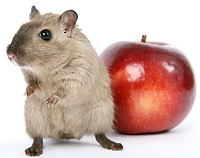What the Food Supply Chain Can Learn from Pharma

The lines between the pharmaceutical cold chain and temperature controlled foods have varied widely, although, in recent years, the lines have become blurred with the rise of stricter food safety regulations, including the U.S.'s Food Safety Modernization Act (FSMA), and the rise of nutraceuticals and cannabis-based products. A result of these trends is that the need for stricter standardization and controls has emerged. Although they are considered separate industries, the food and beverage sector and pharmaceuticals are in actuality similar in a number of aspects and each can learn a lot from one another.
With the increase and complexity of the global supply chain, the pharmaceutical cold chain and temperature-controlled shipping for the food industry have seen substantial growth over the last few years. It is no coincidence that the food industry is now beginning to look to pharma for guidance on best practices. The pharmaceutical industry has nearly 30 years of experience in managing complex control processes of the kind needed now in adjacent markets, so it provides a valuable reference point.
Pharmaceutical and life sciences cold chains require storage of life-saving medicines, vaccines, and other products in temperature-controlled packaging and must be maintained within strict temperature boundaries. Only a few years ago, the pharmaceutical cold-chain meant products requiring storage at 2–8 °C. Increasingly, products today must be shipped at controlled ambient temperature (15–25 °C), or at extremely cold temperatures such as -20 °C, and in even lower cryogenic temperatures such as -180 °C.
Similarly, temperature control is a critical food safety element, as it helps to prevent foodborne diseases and outbreaks that can result in public health issues. Fresh produce must be kept at 0–16 °C or colder, while frozen and deep-frozen foods must generally be kept at 0 to -25 °C or colder. In this sense, temperature control is necessary in both of these industries.
There are a number of takeaways that the food supply chain can glean from the pharmaceutical sector.
Regulatory Reach
Historically, the pharmaceutical industry has been heavily regulated and compliance-driven, as there are strict requirements governing the manufacturing, processing, and storage of temperature-sensitive products. Manufacturers of pharmaceuticals and life sciences products must ensure that shippers they are working with are complying with the global industry standards and recommendations, such as The World Health Organization, The International Safe Transit Association, as well as the strict GxP global quality assurance and health standards.
More recently enacted track-and-trace requirements, including the Drug Supply Chain Security Act in the U.S. and its EU equivalent, the Europe the Falsified Medicines Directive, are placing an even greater onus on pharmaceuticals and logistics enterprises to ensure a secure and efficient supply chain. Together, these requirements and guidelines have pushed global pharmaceutical enterprises to streamline and tighten their end-to-end supply chains.
Manufacturers of temperature-sensitive packaging, traceability, and monitoring solutions can assist customers in meeting these strict regulatory requirements and optimizing their supply chain by providing a range of thermal tests and validation processes to ensure success across all shipment lanes—air, road, and sea.
Although food shipments do not have to comply with the same regulatory requirements, temperature control is a critical food safety consideration by the U.S. Food and Drug Administration (FDA). Over the last several years, the FDA has proposed seven foundational rules to implement FSMA, including Sanitary Transportation, which among other requirements, demands that those who transport food with a need for temperature control to ensure the maintenance of transportation cold chain during operations.
Many expect maintaining food quality and integrity in the cold supply chain to come under increasing scrutiny. Looking to the highly regulated pharmaceutical cold chain provides those looking to ship temperature-controlled food and beverage products an example of how to operate within FSMA regulations.
Prevention of Temperature Excursions
Preventing material temperature deviations is one of the most common objectives pharmaceutical enterprises look at when working with packaging and technology manufacturers in the industry, as well as logistics providers. Temperature substantially impacts many considerations because, when it comes to transporting temperature-sensitive medicines, vaccines, active pharmaceutical ingredients, biologics, and clinical trial samples, temperature excursions mean the difference between success and failure, product integrity and product waste, profit and loss, and can directly affect patient safety.
Although payload size and value may differ, there is a common denominator in the food industry regarding temperature excursions and their direct impact on safety and margins. When evaluating the cold chain, it's similarly important to consider packaging, lane optimization, logistics providers, and the technology used to ensure the successful transport of products. Issues with any of these cold chain components can lead to product loss or safety issues.
Cost Reduction
Cost considerations and improved margins are a common consideration in both the food and pharmaceutical sectors. In the pharmaceutical space, enterprises are increasingly viewing their supply chains as a competitive differentiator rather than as a cost center, and are looking for ways to optimize and streamline their processes and logistics. Evaluating and standardizing cold chain practices is one way to monitor a business's efficiency. Risk mitigation through technology is a central component of driving down costs and minimizing the resources needed to run an efficient and effective cold chain.
Reusable cold chain solutions can drive down costs and drive sustainability efforts while reducing the time spent on shipment review by providing data earlier on in the review process and enabling businesses to manage their shipments by exception. These solutions are preconditioned to meet the strict health and safety standards, which are equal to or greater than those in place in the food industry.
Quality Automation
Knowing immediately not only about a temperature or other environmental deviation but where it happened is valuable information for quality teams operating in the pharmaceutical sector. Real-time and continuously available data from today's technology enables these specialists to access information earlier in the shipment process and prevent product delays due to lengthy investigation cycles. The pharmaceutical industry is shifting towards a manage-by-exception modality, where only shipments requiring review are flagged, thereby automating the quality review process.
Quality and safety leaders in the food sector, once they are armed with data and insights, are able to illuminate the blind spots and discover the improvements that are needed.
Continuous Improvement
Aside from risk mitigation and resource savings, continual monitoring technology is building data that is enabling pharmaceutical enterprises to optimize their global supply chains. Over time, businesses gain a treasure trove of predictive and actionable insights that can help drive better decision making and drive sustainability efforts. By understanding the impact of time, temperature, location, and other variables through continual monitoring, traceability, and gathering insights, food leaders gain similarly supply chain visibility and that can help them protect and maintain products from farm to fork.
Innovation
While the pharmaceutical enterprises spend, on average, approximately 18 percent of annual revenue on R&D, when it comes to technology adoption, the industry has lagged behind other industries. Cloud and Internet of Things (IoT) adoption has taken off in the last few years, and pharma enterprises are now beginning to realize the value in having access to real-time temperature and produce movement traceability data. This is one area in which pharmaceutical businesses might learn from the food sector, and where technology has been largely driven by consumer demand. The future of analytics and insights, predictive and prescriptive data, and fully digitalized cold chains will only help these sectors go further as they become mission-critical for both industries.
While the nuances of the life sciences and food industry cold chains may differ, the food industry can similarly address compliance and standardization, prevention of temperature excursions, costs, and innovation.
The labor and cost-saving techniques the pharmaceutical industry has embraced should now be considered by adjacent sectors including the food and beverage industry, as organizations there prepare to meet growing regulatory demands without taking resources away from their core business priorities.
Gisli Herjolfsson is CEO of Controlant, a developer of real-time visibility solutions and services for the digitally connected, temperature-controlled supply chain.
Looking for a reprint of this article?
From high-res PDFs to custom plaques, order your copy today!




